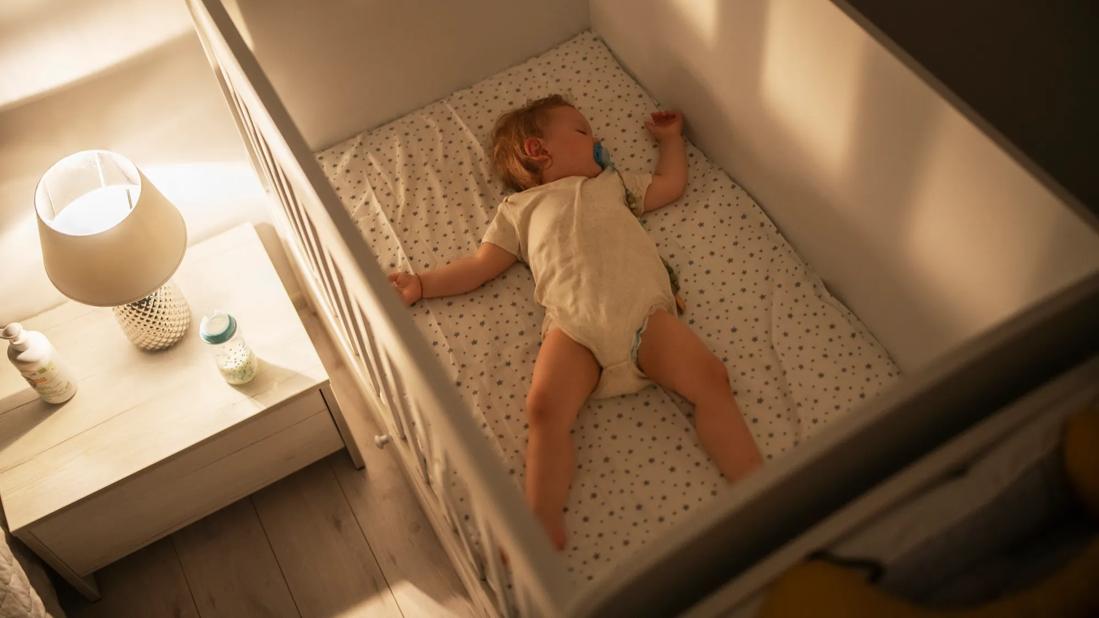This technique can initially take a lot of time and patience, but it can also comfort your child as they learn to fall asleep on their own

It’s a tale as old as time: Your baby starts drifting off to sleep while you’re still in the room, but they wake up and immediately burst into tears as soon as you try to sneak out.
Advertisement
Cleveland Clinic is a non-profit academic medical center. Advertising on our site helps support our mission. We do not endorse non-Cleveland Clinic products or services. Policy
If you’re researching how to solve this common parenting dilemma, you’re probably looking into all the various sleep training methods and guidance on how to do them. Could the chair method be the right fit for your family?
You might also hear this method called:
Pediatrician Noah Schwartz, MD, explains this sleep training method and how it can help exhausted new parents or caregivers (and their sleepy kiddos) get a better night’s sleep.
Like the Ferber method of sleep training (aka graduated extinction), the chair method relies on gradual intervals to teach your baby to self-soothe and slowly learn to fall asleep without you in the room.
“The difference is that when you’re following the chair method, you stay in your baby’s room until they fall asleep each night,” Dr. Schwartz clarifies. “By slowly moving farther away from them, they become less accustomed to how close you are.”
Ready to start? First, pick the right chair. You’ll want to use one that’s easily movable, so the big, heavy recliner you bought for the nursery isn’t your best bet. (That said, you don’t actually need a chair to do the chair method. “You can also just stand in your baby’s room and, each night, move slightly closer to the door,” Dr. Schwartz says.)
Advertisement
Here’s how to do the chair method:
All sleep training methods bring both upsides and downsides, and the chair method is no exception. Its main benefit is that it can bring comfort to your kiddo to have you in the room with them.
“This chair method can be especially helpful if your child is a little bit older and has some separation anxiety,” Dr. Schwartz says. “Knowing that you're right there can be comforting to them.”
But for younger babies, the chair method brings a few potential negatives:
Dr. Schwartz also notes that the chair method isn’t ideal for families who live in small spaces. If you have a one-bedroom or studio apartment, it can be extremely difficult to implement this sleep training method.
Before you implement any sleep training method, take a moment for self-awareness.
“You have to know your personality and the personality of any other potential caregiver,” Dr. Schwartz advises. “Everyone has to be on board for the method you choose because if one person breaks the pattern, the entire sleep training process just won’t work as well.”
Consider the pros and cons of the chair method to determine whether it’s a good fit for your family. And if so? Pull up a chair — and good luck!
Advertisement
Learn more about our editorial process.
Advertisement

Your child may be ready if they’ve outgrown their crib or keep escaping it, or if they seem mature enough to make the switch

Babies can be noisy little sleepers! Blame small nasal passages and short sleep stages

Experts recommend having infants sleep in your bedroom but not in your bed

This sleep training method can bring quick results, but it may be stressful for parents

Help children get their needed rest by teaching good sleep hygiene, using mindfulness techniques and creating a calming environment

This technique involves picking up your baby to soothe them if they fuss or cry, but then, returning them to their crib before they fall asleep

Also known as graduated extinction, ‘Ferberizing’ teaches your child to self-soothe and fall asleep on their own

You can choose one method or combine aspects from a few to help your baby learn to sleep through the night

The best parenting style balances enforcing rules and showing plenty of love

Tips include cutting back on sugar, focusing on exercise and managing stress

It can be harder to let go when you’ve invested time, energy and emotions — but it might be the healthier choice long term